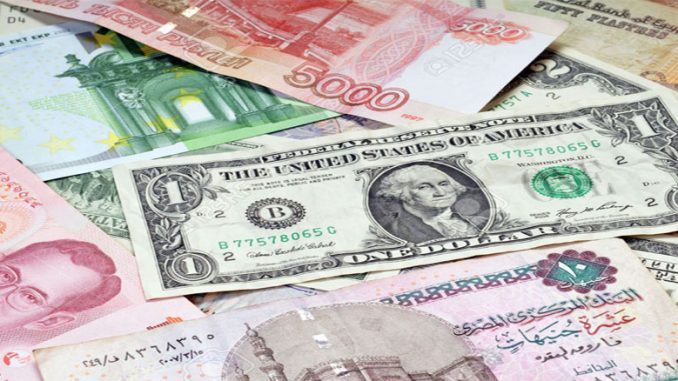
The Egyptian economy has all the economic fundamentals necessary to embark on the path of development; and the efficient management of these resources is the real key to economic advancement, as well as the political will.
Although the availability of material and human resources is an important factor in achieving development, the management of these resources requires a number of basic components, including detailed information on the types, quantities, and cost of material resources, and the disciplines, experiences, and skills of the human resources – within the framework of the comprehensive economic vision which governs the development process, including the economic system and organization that will contribute to development, as well as the economic doctrine adopted.
Also, the development process must be based on a specific manufacturing pattern, which may be the ‘export-orientated strategy’ or the ‘import replacement strategy’ or a combination of both. In addition, it is also necessary to question the position of the Egyptian capitalist class in the development process, especially in light of the widespread poverty among Egyptians, and to discuss how to achieve the market economy requirements, and at the same time care for the working class.
Pillars of Economic Development
The pillars of development are the specific framework for economic development plans. The following elements could be key to economic development in Egypt:
First: Vision
The overall vision of the State includes political, economic and social visions, according to which the future direction of the State is determined. Taking into consideration that this paper focuses on the economic issue, we can note the most important elements that should be covered by the Egyptian economic vision, as follows:
A- Economic system and organization
The system is the set of economic, legal and social relations that govern the course of economic life in a given society at a particular time. The economic system focuses on a set of relations, rules, and foundations that govern interaction and mutual influence between human needs on the one hand and natural, human, knowledge, and technical resources on the other. Thus, the economic system consists of a group of institutions that deal with the production, distribution, consumption of goods and services within a given society, and the relationships existing between those institutions and members of society.
The economic organization is the means used by the economic system to organize economic process and various economic activities. The nature of economic regulation varies from one economic system to another. (Also, Economic Organization is defined as the way in which the means of production and distribution of goods are organized, such as capitalism or socialism.)
In the Egyptian case, we have a hybrid mechanism of capitalism and socialism, resulting in an imbalance in the prevalence of poverty. It is therefore possible to suggest that the Egyptian economic system is a ‘Capitalist’ system, with a structural role of the State through a group of organizations.
For example, the adoption of a market system does not prevent the existence of monopolistic regulations, to control performance by building distribution chains that can break the monopoly rings especially in commodities, as well as the adoption of consumer protection organizations and laws and training market inspectors to control these rings. Thus, the economic system prompts the state to adopt specific institutions to conduct economic processes between the structures of the system, and impose the way of managing these institutions.
B- The Economic Doctrine
Identification of an economic doctrine like any other concept is linked to a set of elements that are part and parcel of this concept. The components of the economic doctrine are:
1- Specificity
Specificity here means the explicitness of the vision adopted by the economic thinker, that make him distinguished from thinkers of other economic doctrines. Specificity must be integrated with the other components of the doctrine to raise the economic ideas to the doctrine level.
2- Doctrinal unity
The doctrinal unity here means the harmony, coherence and regularity of economic ideas under a principle or set of intellectual principles. These ideas are intertwined in a single system, which allows for their designation as economic doctrine.
3- Integrity
Integrity here means the integration of vision with respect to the various aspects required by the economic doctrine.
4- Sufficiency
Sufficiency here means that the basic principles of the doctrine are sufficient to build a doctrine; and the doctrine must be sufficient to explain or understand the various – or at least the basic – aspects of economic activity.
5- The ideological basis
Relying on ideology is not a requirement for the formation or establishment of the doctrine, but it is a significant part of its components. It is the intellectual structure upon which economic thought is based, as there is no thought without prior ideological affiliation.
Therefore, ideology determines the identity of the doctrine and guides the economic thinker in his choice of ideas, methods and tools, and to identify, coordinate, organize and discuss options. The economic doctrine can be defined on the basis of these components. For example, in spite of the Islamic doctrine’s specificity, harmony of ideas, and interdependence under one intellectual principle, and the integrity of its vision and adequacy to understand economic activity, but some of the jurisprudential topics need further intellectualization.
Second: Manufacturing Patterns
There are two specific types of manufacturing patterns, either the import-replacement pattern or the export-oriented pattern; each of which has its own mechanisms, stages, characteristics, and disadvantages that radically differ from each other’s. This can be explained in short as follows:
1- Import-Replacement Pattern
Replacement of imports means the establishment of some industries in order to meet the market need as an alternative to imported industrial goods.
This strategy consists of two main phases:
Phase 1: Replacement of imports by non-durable consumer goods. The State usually provides sufficient protection for these industries to prevent competition from foreign products and to ensure necessary profits for investors to stimulate them.
Phase II: This phase begins when the local market is unable to absorb more consumer products so they are directed to export, while at the same time some intermediary and capital industries can be started, with the help of the industrial progress achieved in the first phase.
Conditions of success
The most important conditions for the success of this strategy are:
– Maintaining a high national currency exchange rate
– Establishing import licensing system
– Granting government loans
– Laying the foundations for the selection of industries to replace imports
– Suspending and mitigating the protection policy over time
– The need to rely on domestic resources as much as possible and reduce external dependency.
2- Export-Oriented Pattern
The Manufacturing for Export strategy is intended to focus on industries that have relative advantages in their production and have the opportunity to export their products, taking into account the deterioration in the terms of trade for the disadvantage of developing countries.
Motivation of application
– Taking advantage of relative domestic advantages
– Taking advantage of the abundance of export earnings of foreign currency to finance economic development activities.
– Overcoming the problem of the limited local market and the small production units.
Conditions of success
The most important conditions for the success of this strategy are:
– Political and economic stability
– Providing incentives to exporters
– Strengthening the private sector
– Existence of a high degree of integration between the industrial sector and other sectors
– Utilization of the free zones system
– Providing the appropriate environment for the growth of foreign investments
– Strengthening small and medium industries
The possibility of merging the two patterns:
In order to ensure the success of the results of both strategies in achieving the results of targeted economic development, they can be merged by establishing export branches for some transformative industries in order to expand the local market and develop replacement industries (with emphasis on the temporary nature of the protectionist methods) to turn into export industries afterwards.
In the case of Egypt, the two strategies can be combined, but with precise identification of the proportions of the two combinations at each stage of development.
Third: Care for the Poor and Middle Classes
Almost half of the Egyptian population live around the poverty line, including those living in cemeteries, and others in slums, who all suffer from the deterioration of basic government services of education, health, justice, roads and the like. The agreement on this trend towards the poor and middle classes poses a question about the quality of the programs that can be directed and the most pressing priorities.
The researcher sees that the issue of education, health, housingو and women heads of household come at the top of the issues to be addressed in the case of Egypt, while emphasizing the need to provide innovative solutions when each of these issues is addressed.
Fourth: Positioning the Capitalist Class within the National Economy
In Egypt, the new capitalist class emerged after the economic opening in the 1970s, and then extended with the beginning of the Mubarak era, and infringed after mating with authority at that time.
The beginning of economic openness in Egypt depended on import rather than production, and corruption widely spread in economic transactions, including bribery and favoritism and the prevalence of consumption culture.
In the era of Mubarak, the roots of corruption resulted in the development of a parasitic, non-productive, capitalist class, relying mainly on its relations with the authority. Its wealth accumulated in a very short time and its political and economic influence soon doubled with access to the parliament and municipalities, partnership with the military in some projects, possession of TV satellite channels, and in some cases incursion into social work.
In light of the influence of this capitalist class and its infringement on the economic, social and political life, there is need to develop frameworks for dealing with it and reducing its influence. The researcher believes that this class must be subject to further research and scrutiny through different entries, both in terms of origin and composition, or in terms of the activities in which they operate, or in terms of their relative weights as families, individuals or blocs with the authority. In general, we should emphasize that the starting point of dealing with this class must be far from any old hatred.
Fifth: Foreign Investment
Foreign direct investment (FDI) to the economies of the host countries has a set of undeniable advantages, including being an essential source of financial resources, especially for developing countries, and a source of administrative knowledge and experience (know-how), as well as localization of technology, increasing export capacity of host countries, creation of new jobs, reducing unemployment, training national employees, and supporting research and development operations, in addition to other benefits that could be realized indirectly.
However, there is a set of observations that must be checked before determining the strategy that the State will adopt in dealing with the foreign investment, including:
– Exaggeration in the importance of foreign investment at the expense of domestic investment in pushing development forward is a common mistake from the point of view of the researcher.
– The transfer of profits and the return of capital to the country of origin should be subject to controls based primarily on the national interest, regardless of the potential negative impact of these controls on attracting investment in the future.
– The importance of a free flow of economic information (transparency).
– The key challenge for any government is to create a stable financial environment. The key to stability is low inflation, low fiscal deficits and a fiscal policy aimed at averting the spread of credit. Low inflation means low interest rates, good industrial relations and stable exchange rates. The foreign investors consider low inflation as the basis for building a market economy. The role of foreign investment is somehow limited compared to the domestic investment, in light of the former’s fluctuations in accordance with the political conditions. In the end, preservation of the national security with its broad concepts remains a key determinant of roles that must be carefully drawn for foreign investment.
Sixth: Employment of Local Potential
It can be said that the term potential here includes local raw materials and minds. Accordingly, consideration of this point will include the following:
1- Local raw materials
The researcher sees that survey of local raw materials in terms of quantitative and economic availability precedes preparation of development plans at different stages.
Therefore, the starting point is the preparation of an ‘atlas’ of local materials, and then arranging them according to the prices of extraction and the possibility of employment in manufacturing industries, and preventing as much as possible exporting them before manufacturing.
This should be followed by a study of the most important legislation applied to the exploitation of these raw materials, the most important amendments to be made to them, as well as the most important legislation to be enacted in the same framework.
All national institutions working in the field of extraction or exploitation of these materials should be examined, with respect to their compatibility, the likely need for merging some into larger entities, or separate parts of them into independent entities, or perhaps the need to create new institutions to be compatible with the economic regulation plans followed.
It is also necessary at some point to re-review all contracts concluded for the extraction and exploitation of these raw materials, and to try to bargain for the improvement of some items that are not suitable either directly, or through the promise of new contracts, or even through international economic arbitration.
2- National Capacities at Home and Abroad
Activation of this atlas-based proposal would equip generations of experienced people to assume responsibility not only at the ministerial level, but also at the municipalities level, and would enable large numbers of them to contribute to decision-making and changing the reality. This will undoubtedly reflect positively on the spirit of belonging and providing stability necessary for development.
Based on these proposed pillars, the stages of economic development can be divided as follows:
– The stage of economic revitalization
– The stage of structural reform
– The stage of implementation of the comprehensive plan
This paper only presents a preliminary presentation of the development pillars from the researcher’s point of view; an attempt that expects receiving a research support from colleagues to enrich the issue, build upon it, and add other theoretical pillars, or provide more details to some points that the researcher briefly addressed.
*By Dr Ahmed Zikrallah, an Egyptian academic, professor of economics at Al-Azhar University’s Faculty of Commerce. The article was published in the Egyptian Institute for Studies on 25 Oct. 2018.



